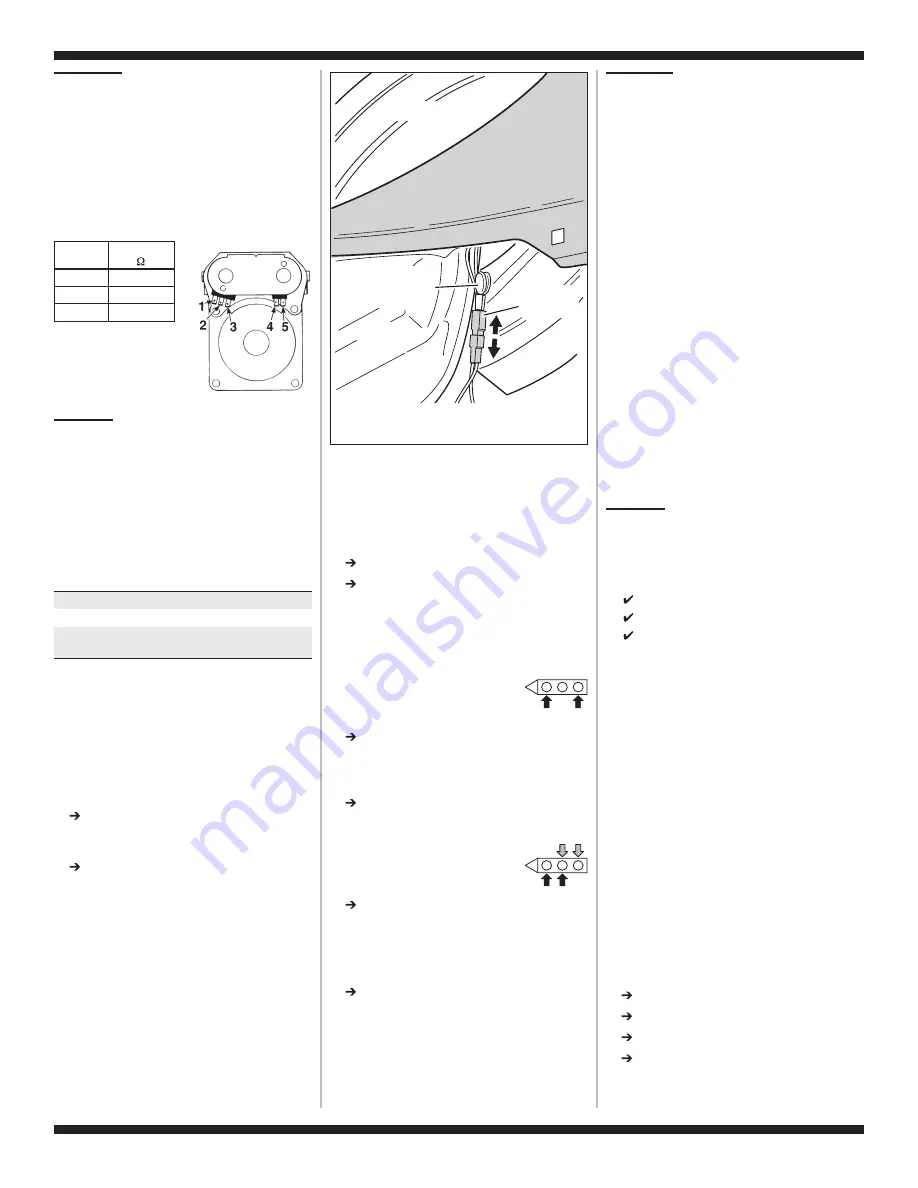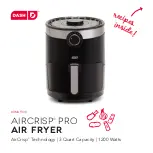
10198666B
W
.
O
N
T
R
A
P
Y
L
N
O
E
S
U
S
’
N
A
I
C
I
N
H
C
E
T
E
C
I
V
R
E
S
R
O
F
TECH SHEET - DO NOT DISCARD
PAGE 8
TEST #4d
Gas Valve, Gas Dryer
1.
Unplug dryer or disconnect power.
2.
Access the gas valve by removing the toe
panel. See Removing the Toe Panel, page 9.
3.
Use an ohmmeter to determine if a gas valve
coil has failed. Remove harness plugs.
Measure resistance across terminals. Readings
should match those shown in the following
chart. If not, replace coil.
Terminals
Resistance
1 to 2
1365
±
60
1 to 3
560
±
25
4 to 5
1325
±
55
IMPORTANT:
Be sure all harness wires
are looped back through the
strain relief after checking
or replacing coils.
TEST #5
Moisture Sensor
NOTE:
This test is started with the dryer
completely assembled.
This test is performed when an automatic cycle
stops too soon, or runs much longer than
expected.
NOTE:
Dryer will shut down automatically after
2½ hours.
The following items are part of this system:
Harness/connection
Metal sensor strips
Machine control electronics. See ESD information,
page 1.
1.
Activate the Diagnostic Test Mode and advance
past saved fault codes. See procedure on
page 1.
2.
Open the dryer door. The dryer will beep and
an alphanumeric number will be displayed.
3.
Locate the two metal sensor strips on the face
of the lint screen housing. Using a wet cloth or
one finger, jointly touch both strips.
If a beep tone is heard and an alphanumeric
number is displayed on the console, the
sensor passes the test. Go to step 9.
If a beep tone is not heard, or a continuous
beep tone is heard before touching both
moisture strips, continue with step 4.
NOTE:
Overdrying may be caused by a short
circuit in the sensor system.
4.
Access the moisture sensor wires by removing
the toe panel. See Removing the Toe Panel,
page 9. Disconnect the sensor wires from the
harness. See figure 12.
5.
Access the machine control electronics.
See Accessing & Removing the Electronic
Assemblies, page 9. Remove connector P13
from the circuit board. Check the main harness
connections between the sensor harness and
machine control for a short or open circuit.
Replace the main harness if necessary.
If harness is OK, continue with step 6.
6.
Access the moisture sensor by removing the
toe panel. See Removing the Toe Panel, page 9.
Disconnect the sensor from the wire harness.
See figure 12.
7.
Measure the resistance
across the outermost
contacts of the cable that
includes the two red MOVs.
If a small resistance is measured, check
for debris across moisture strips inside the
drum; clean if debris is present. If debris
is not present, replace sensor harness.
If a small resistance is not measured,
continue with step 8.
8.
Measure the resistance across
each of the outermost
contacts and the center
terminal (ground connection).
If a resistance less than infinity is measured,
replace the sensor harness.
9.
If moisture sensor diagnostic test passes,
check the thermistor: Perform TEST #4a,
page 7.
If the problem persists after replacing the
moisture sensor and thermistor, replace the
machine control electronics.
TEST #5a
Adjusting
Customer-Focused Drying Modes
NOTE:
If the customer is complaining about the
clothes being damp and the moisture sensor
passes TEST #5, step 3, the total dry time can be
lengthened by changing from a “CF1” (standard
auto cycle) to a “CF2” (15% more drying time) or
“CF3” (30% more drying time) auto cycle.
1.
In Standby mode (dryer plugged in but not
powered up), press and hold the Dryness Level
button for 5 seconds. The dryer will beep and
the current drying mode will be seen on the
display. The factory default value is “CF1”.
2.
To select a different drying mode, press the
Dryness Level button again. The dryer display
will flash and show
2
,
3
, or
.
3.
With the display flashing the selected auto
cycle mode, press the Start button to save the
drying mode and exit diagnostics (the Start
button in this mode does not start a drying
cycle). The result will be stored in EEPROM
of the control board, and will be retained after
a power loss.
4.
Press the Pause/Cancel button at any time
to cancel changes and exit from this mode.
TEST #6
Buttons and Indicators
This test is performed when any of the following
situations occurs during the Console Buttons and
Indicators Diagnostic Test, page 1:
None of the indicators light up
No beep sound is heard
Some buttons do not light indicators
None of the indicators light up:
1.
See Diagnostic Guide/Before Servicing...
on page 1.
2.
Perform TEST #1, page 4, to verify supply
connections.
3.
Perform steps in Accessing & Removing the
Electronic Assemblies, page 9, and visually
check that the P5 connector is inserted all the
way into the machine control electronics.
4.
Visually check that the console electronics and
housing assembly is properly inserted into the
front console.
5.
If both visual checks pass, replace the console
electronics and housing assembly.
6.
Plug in dryer or reconnect power.
7.
Perform steps under DIAGNOSTIC: Console
Buttons and Indicators, page 1, to verify repair.
8.
If indicators still do not light, the machine
control electronics has failed:
Unplug dryer or disconnect power.
Replace the machine control electronics.
Plug in dryer or reconnect power.
Perform steps under DIAGNOSTIC: Console
Buttons and Indicators, page 1, to verify
repair.
Blower
Housing
Drum
FRONT
Harness
Connection
MOVs
(Metal Oxide
Varistors)
Figure 12.
Disconnect sensor from wire
harness.
CF CF
1
CF






























